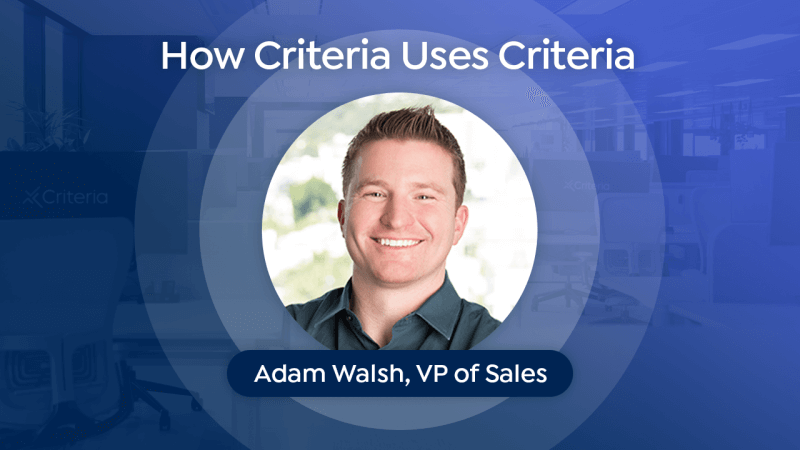This article is the first of a new blog series: “How Criteria Uses Criteria,” where business leaders at Criteria grant you an inside look at how we leverage our own platform to make informed talent decisions. To kick off this series, we interviewed Adam Walsh, Criteria’s VP of Sales, to understand how he uses Criteria’s tools to recruit and develop his top-notch sales team.
Hi Adam – thanks for taking the time to talk to us today. Can you tell us a little bit about your role here at Criteria and the types of challenges you face?
Absolutely. I am the head of sales for North America and oversee an amazing team of sales leaders, sales development representatives, sales executives, and sales operations. We help companies across just about every industry address the challenges related to hiring, onboarding, and developing talent within their organization.
Our goal is to help them leverage our tools to go from a talent management program to more of a talent success program, where they are putting the right people in positions where they can thrive and where they can make the biggest impact on the business. That includes moving to other roles within the organization.
As you can imagine, we need people who are smart and driven. They like talking to people, learning about their industry as well as the challenges within it, and working to help solve their problems. We also need people who know how to prioritize and can adapt to change quickly, as our market, product, and business change quite often.
Tell us more about your overall approach to hiring and if there’s anything in particular you look out for.
I think the first step in hiring a more productive and more diverse workforce is to make sure you are using data points or talent signals that are more predictive of job performance. It’s also important to look at someone’s potential, not just their past experience. By adding that to the hiring process, it allows for a more effective (but also more fair) selection process, which often allows you to expand your applicant pool.
Because you’re adding additional data points or signals to the hiring criteria you already look at, there are now more ways to include a candidate and opt them into a process that most likely opted them out if we were only looking at their resume, education, experience, and an interview.
Using assessments from the start of the hiring process shows how likely a candidate is to be able to perform the responsibilities of the role. It also gives you insight into how comfortable they will be with that role, as shown by the score ranges provided on each assessment (Criteria even allows you to set custom ranges in the system based on your testing data). There are even other score ranges listed in the drop downs to see how well they match other roles within the organization, including leadership roles to help you identify areas for talent mobility early.
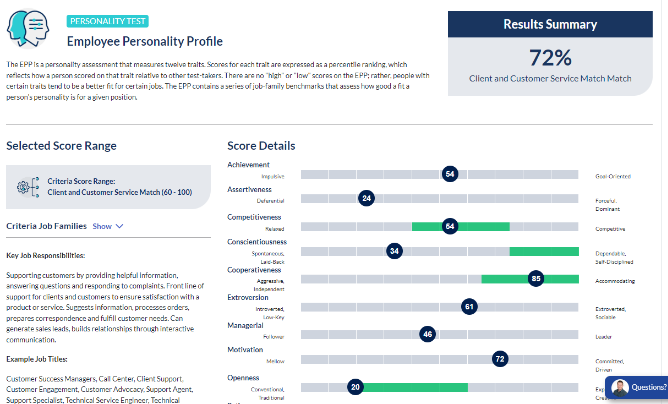
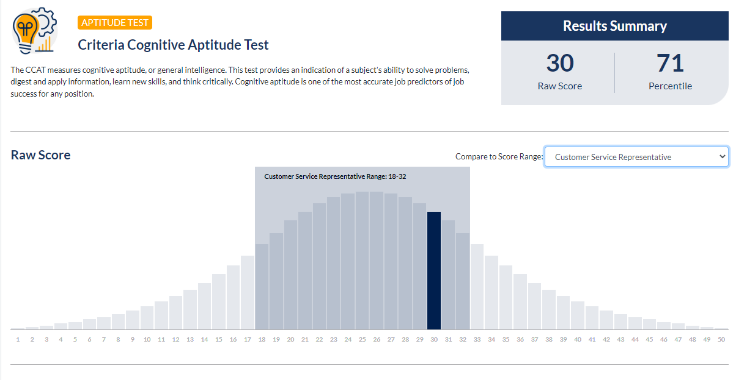
However, recruitment is only the first step in the process. Once we are successful in hiring the right people for our organization, we have to make sure we coach them, develop them, and make them feel included within our organization. This is one of the main reasons Criteria created Develop and are continually improving and adding to it. We want to help you find, onboard, promote, and retain the best talent.
Of course – hiring can feel like just the first of many hurdles. How do you tackle getting each new hire integrated within their new team?
Once someone goes from a candidate to an employee, we use their Employee Personality Profile to create a Workplace Insights report. This helps us add them to the desired teams within the Develop portal. This portal shows an overview of the 4 key traits for my team, plus a visual overview of where the team falls across all 10 traits. I (and the managers on my team) use this information to help us understand the personality and behavioral makeup of our team to optimize their interactions and communications across that team.
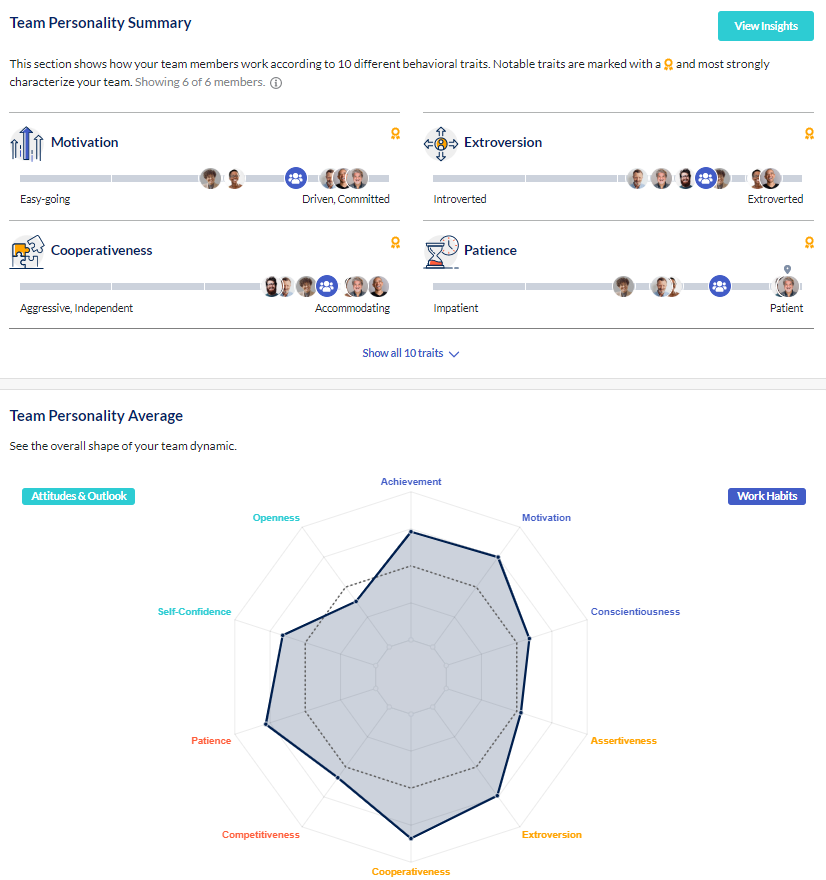
I love Develop and use it across my team, and my managers use it a great deal in their 1-on-1s and interactions with the team. I believe it’s better to have too much information than not enough to help you make the best decisions for your organization. Develop can pull together detailed Manager Guides on how to best communicate, support, and motivate the members of our teams.
I can click on any member of the team and access the Manager Guide for that individual. This is great for existing managers, as well as a great onboarding resource for new managers to best coach and develop their team to achieve the results needed in their current role. We can even use these manager guides to help identify and prepare employees for their next potential role within the organization.
The Manager Guide provides questions to help my managers better understand their teams. These guides improve communication by knowing the preferred way that individual gives and receives information. They help managers better support their team members by knowing the right questions to ask in order to better understand each person’s work preferences and the environment they tend to thrive in. The last one is key because it’s now become very well known that different people are motivated differently and by different things. When a manager knows the questions to ask, they’ll get a clearer picture of what motivates an individual, how to best challenge them, and how to develop them to achieve their goals. This type of relationship is invaluable to their success in their current role, as well as setting them up for success in their next role.
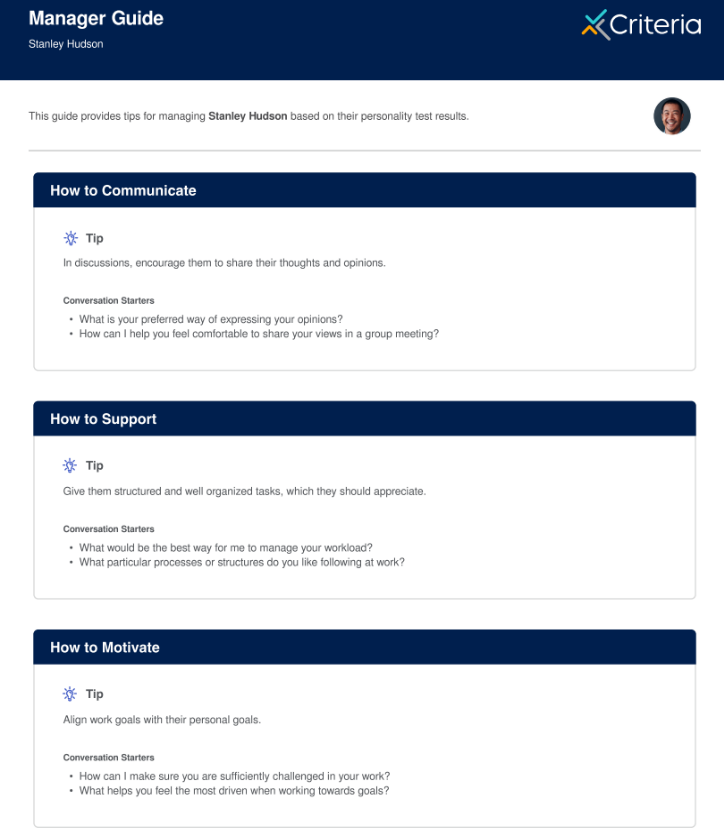
It’s clear that you value productive and development-focused managerial relationships. What’s your strategy for building high-functioning teams that contain a diverse range of work preferences?
Collaboration is key. Whether it’s a direct manager working with their direct report in coaching conversations, 1-on-1s, small or large group meetings, or a cross-functional team working on a project together, knowing the best way to interact with and collaborate with the other person is key to maximum output and efficiency.
Just like the Manager Guides, I can use the Criteria platform to generate Collaboration Guides. These have been an integral part of our own restructuring of our internal meetings and communications, right along with many of our clients. As we learned more about how different people like to communicate – how comfortable they are in sharing information, speaking up in larger groups, or how much time it takes for them to feel comfortable sharing their opinions – we began changing the way we structured our meetings to make them more inclusive to different communication styles.
For example, we enabled people to shared written submissions of feedback, allow anonymous submissions of feedback, and create smaller group opportunities to gather feedback and provide coaching instead of just the traditional open forum. This allowed us to get information from more people across the whole team by providing ways to communicate with them that were more compatible to their collaboration and communication style.
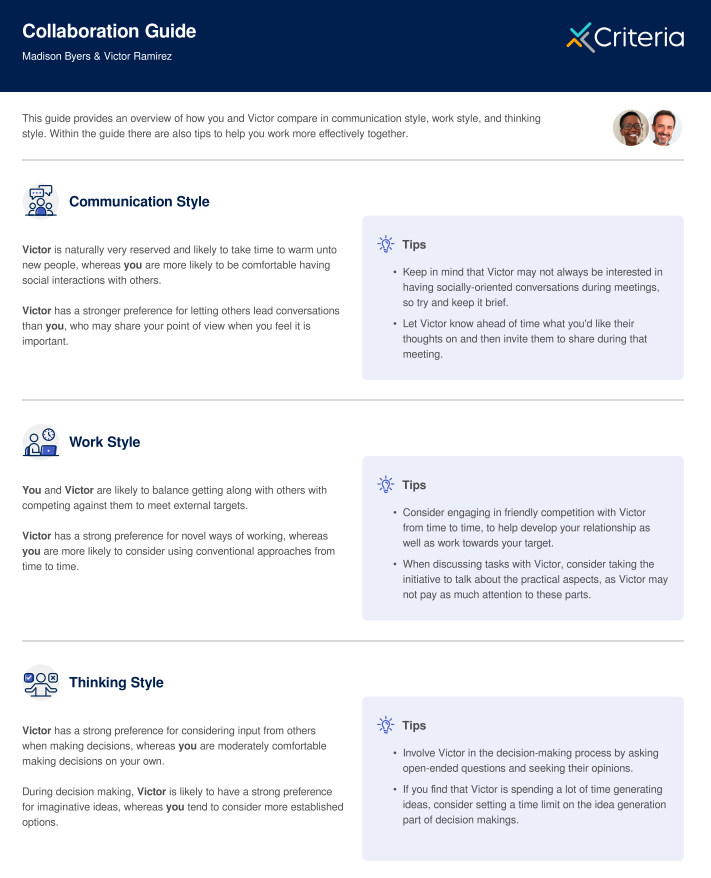
Thank you for sharing insight into how you create such high-performing teams. Is there anything else you’d like to share?
I guess I would just say that people are different and complex. Having more insightful information to better understand them and their motivations helps create a plan and environment that is best for them and best for the goals and outcomes of the company.

